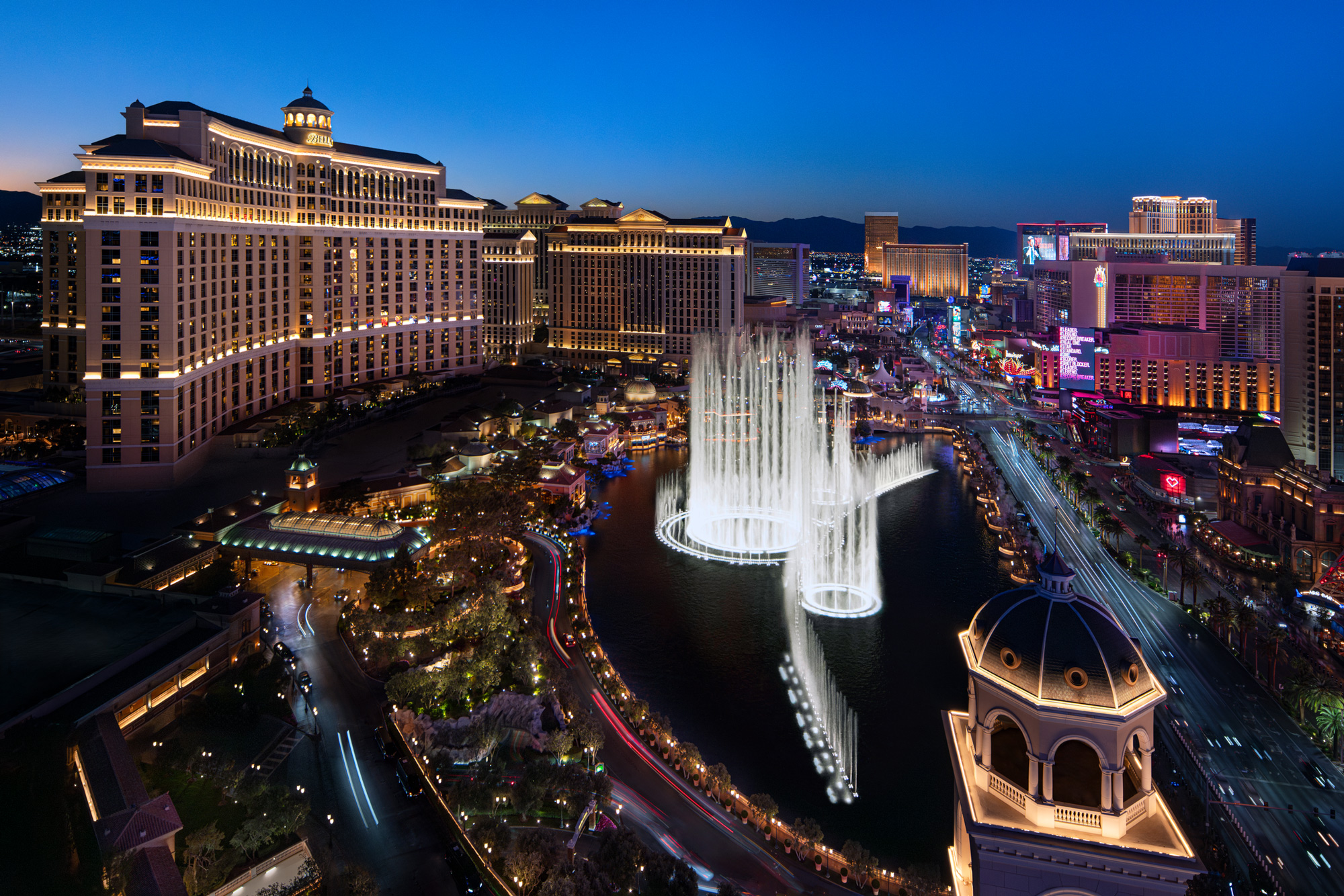
conventional Scottish whisky map shows six regions, but ours has seven as we feel the abundance of Highlands spirit demands it. Ours also contains course recommendations, meaning that when you visit Scotland, this might be the only plan you’ll need
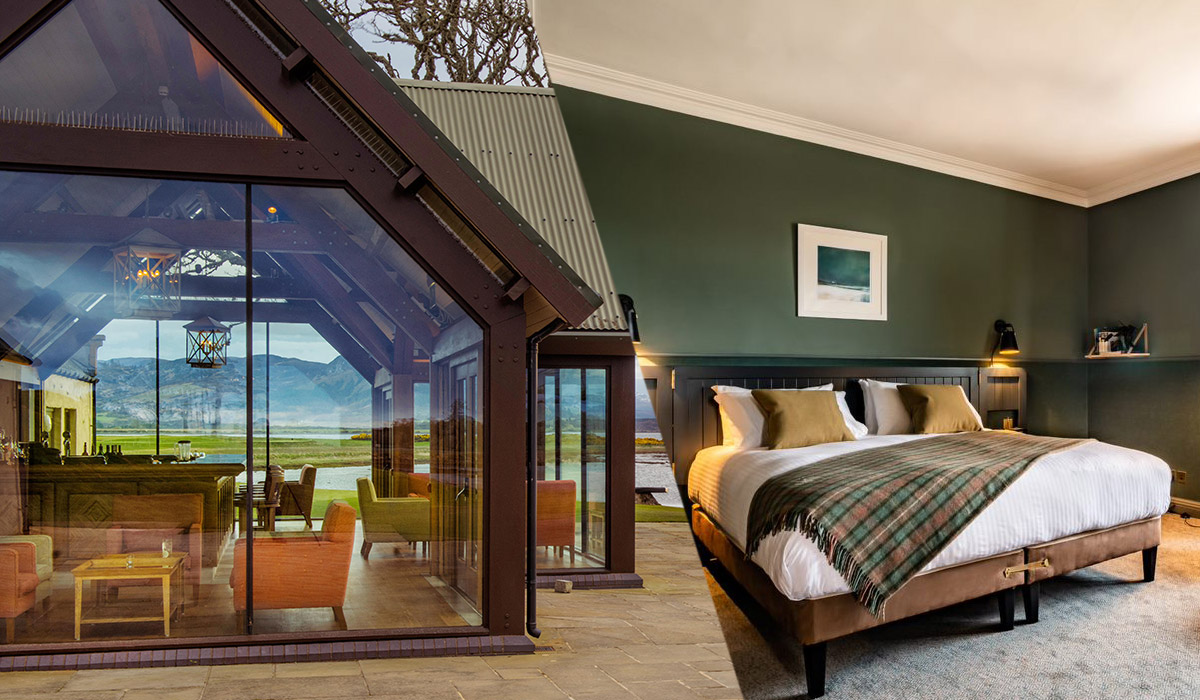
Highland whiskies are often quite light and approachable, fresh and fruity, perhaps with some tropical notes and floral sweetness, but also with soft, mellow tones if you find a good one.
Bringing a new dimension to the northern Highlands right now is the Brora Distillery, which closed in 1983 but has now re-opened after a major investment by Diageo. The restoration brings a modern twist to a distillery that first fired up the stills in 1819, as a biomass boiler powered by sustainably and locally sourced wood chips will ensure Brora Distillery is carbon neutral.
For the collector, the Brora Triptych has been released on a limited basis, incorporating three Brora expressions of different ages: Timeless Original distilled in 1982; The Age of Peat from 1977; and Elusive Legacy from 1972.
Like the distillery, Brora Golf Club also dates back to the 19th century, where the classic links was laid out along this North Sea shoreline by James Braid in 1891.
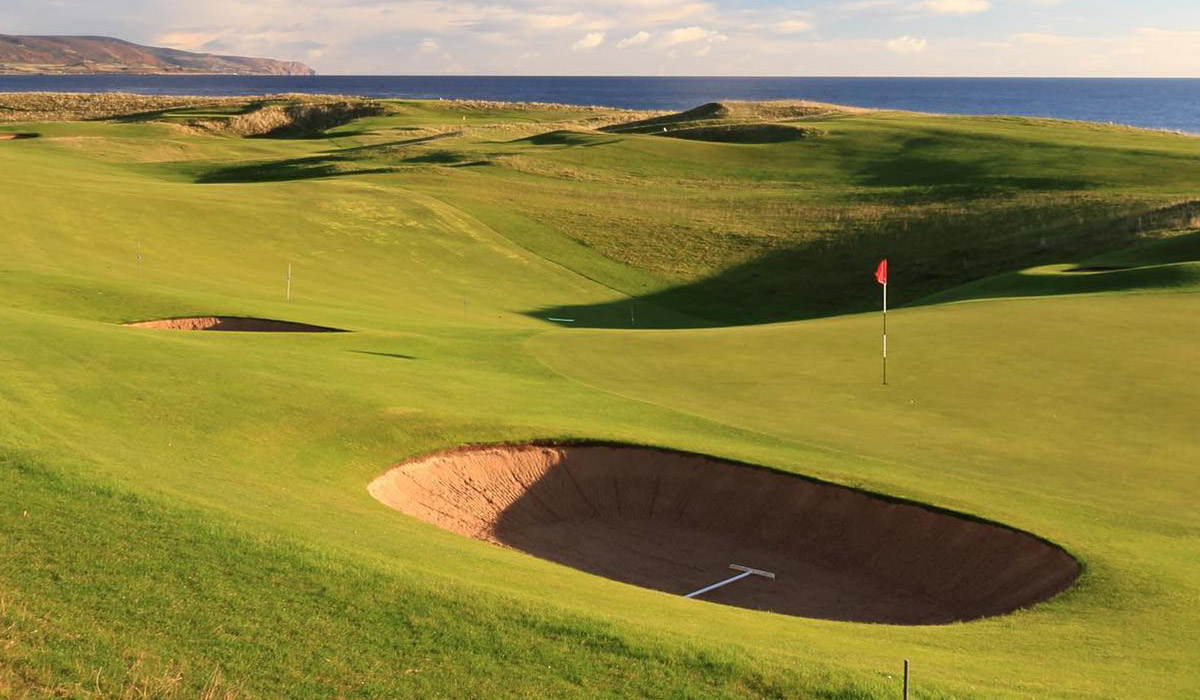
Joining the distillery and golf course in a Brora triumvirate is the charming and traditional Royal Marine Hotel. Offering views of the golf course, the beach and the North Sea, the Marine Hotel provides a homely welcome and country house accommodation of the highest order, with a range of twin and double guestrooms and suites. Equally suited to short and long stays, the hotel’s Braid Lounge is the ideal haven where guests can reflect on a day spent sipping malts, steering golf balls through the coastal breezes, beachcombing or perhaps all three.
Less than 20 miles down the road and past another storied links—the great Royal Dornoch—lies the secluded members-only retreat of the Carnegie Club at Skibo Castle. Industrialist Andrew Carnegie purchased the stunning 8,000-acre Skibo Castle estate as his Highlands getaway in 1898 and built the Carnegie Links, taking golfers down to the tranquil edge of Dornoch Firth. A century later (and some) and the ambience and sense of escape at Skibo Castle remains the same as it ever was, while country sports like fishing and horseback riding endure, along with falconry and hiking amid this unspoilt land of wooded hills and heather. Limited opportunities for international membership to the Carnegie Club are available, for a share of this idyllic Highlands lifestyle.
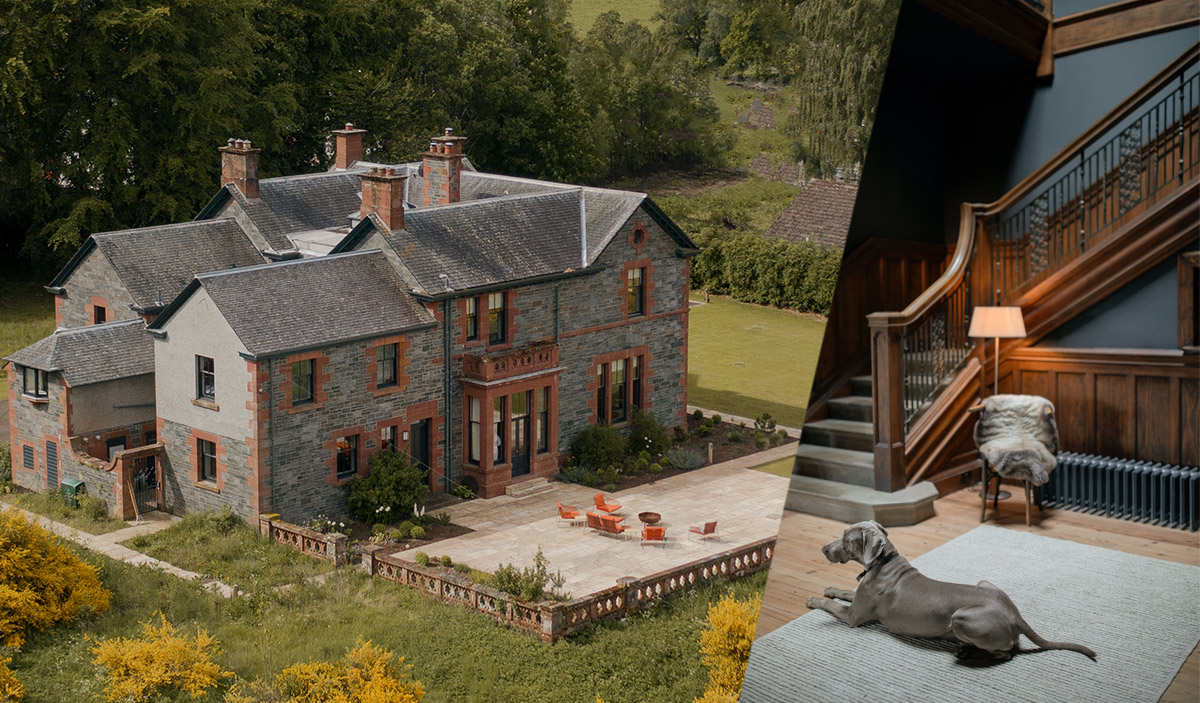
Moving south within the Highlands region can often bring nutty notes and a hint of honey to complement the fruity qualities from the north.
The Aberfeldy Distillery, on the banks of the River Tay, is the spiritual home of Dewar’s whiskies. Back in 1787, the bard Robert Burns wrote of wanting to “spend the lightsome days” in Aberfeldy with a particular “Bonie lassie.” Aberfeldy has retained its natural beauty and Burns would savor the quality of Dewar’s blended whiskies.
They call the Aberfeldy single malt the “Golden Dram” because of its tantalizing, golden, honeyed color. Patient fermenting for an extra-long 72 hours brings out its honey notes, which are joined by delicate floral sweetness and a hint of peat smoke.
The finest accommodation in Aberfeldy awaits at the five-star, nine-bedroom Dun Aluinn House, sitting in five acres of land overlooking the town and the river, while golfers would enjoy the trip to Blairgowrie Golf Club, one of the finest inland golf venues in Scotland, where its famed Rosemount Course was designed by Alister Mackenzie.
Speyside is renowned for soft water, peat and the finest barley crops, which in the right hands can produce soft, elegant, perfumed and fruity single malts. They are often easy to drink, floral and sweet.
Established in 1824, The Macallan was one of Scotland’s first distilleries to become legally licensed, and it produces some of the most famous and sought-after single malts from Speyside. The Macallan 12 Year Old—aged in Oloroso sherry oak casks from Jerez, Spain—has been described as the best 12 Year Old in the world.
The clubhouse at Castle Stuart Golf Club, with panoramic views over the Moray Firth, would be an appropriate spot to savor The Macallan after 18 holes. The Gil Hanse design at Castle Stuart opened in 2009 although it looks as if it has hugged the coastline for centuries. A former Scottish Open venue, hazards here are geared towards the lower handicapper and forgiveness directed towards the higher. The cottages at Castle Stuart are also hard to beat for an overnight stay.
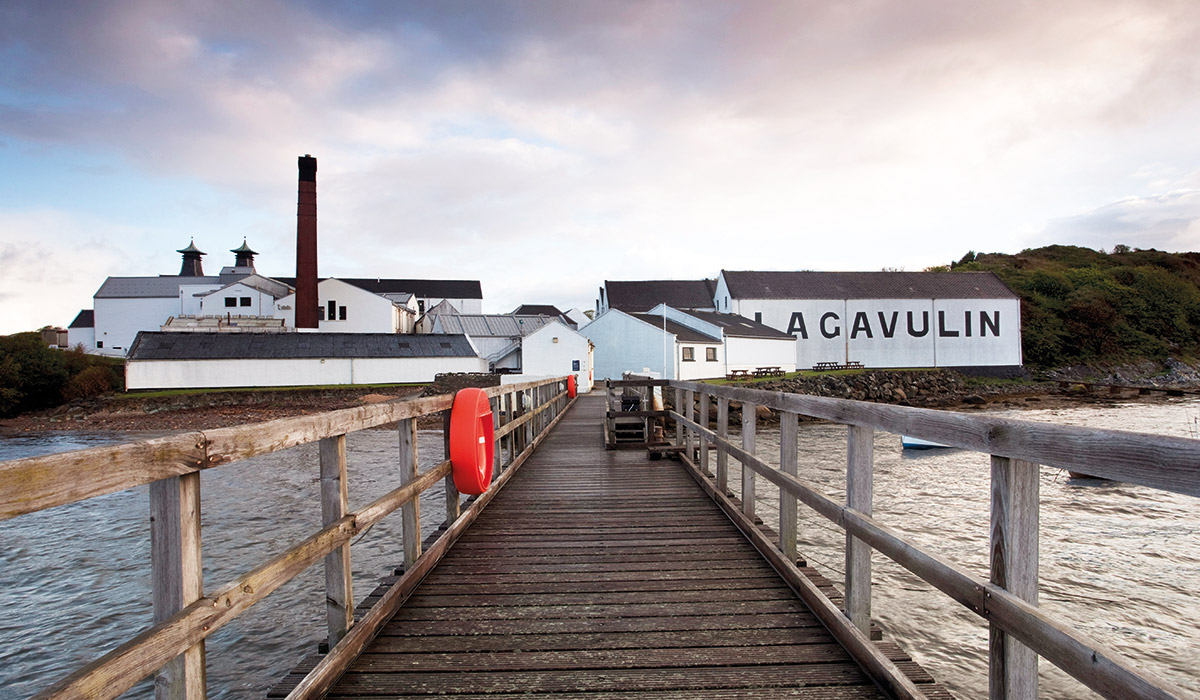
The Scottish island of Islay—the “Queen of the Hebrides”—only measures 25 square miles yet it’s cool maritime climate and quiet isolation lends itself perfectly to resident golden eagles, and also to the distillation process. Islay is home to eight whisky distilleries that are renowned for their robust, peaty, smoky, uncompromising whiskies. Islay whiskies don’t hold back.
The Lagavulin distillery was established in Islay more than 200 years ago by a bay of the same name, and where the ruins of the medieval Dunyvaig Castle now house abundant bird-life. The distillery remains modest in size by modern standards. That’s how they like it here, with demand comfortably out-stripping supply and minimizing the need for marketing. Lagavulin 16 Year Old is the classic Islay single malt, with peat smoke at the forefront, yet it is balanced with cereal tones and rich fruits. As they say on Islay, “Time takes out the fire but leaves in the warmth.”
If you make it to Islay, stay and play at The Machrie, where the stunning links bordering Laggan Bay dates back to 1891. The course was laid out by Musselburgh’s Willie Campbell, who played in the first U.S. Open in 1895.
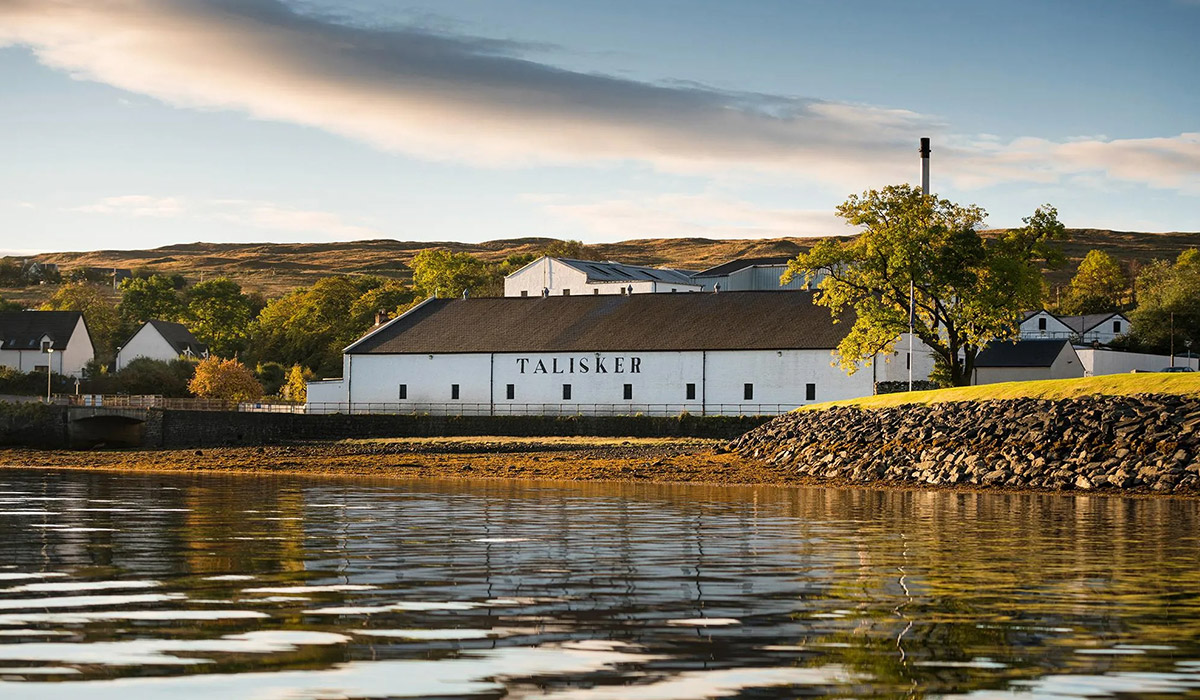
One hundred miles due north from Islay—as the eagle flies—brings you to the island of Skye and the home of Talisker whisky. Dating back to 1830, Talisker is the oldest distillery on Skye, in the remote village of Carbost and on the shores of Loch Harport. The Talisker 10 Year Old is a powerful single malt with a sea-salty nose, spicy complexity, smoky yet sweet character and a famously peppery finish.
The Isle of Skye Golf Club offers a genuine down-to-earth, no-frills, nine-hole seaside layout on Skye’s eastern shoreline, where a straight-forward golf course can be made much harder than it looks, depending on the weather. Calm, still days are few and far between, while the Kinloch Lodge Hotel provides the ideal retreat and an acclaimed and eco-sensitive restaurant.
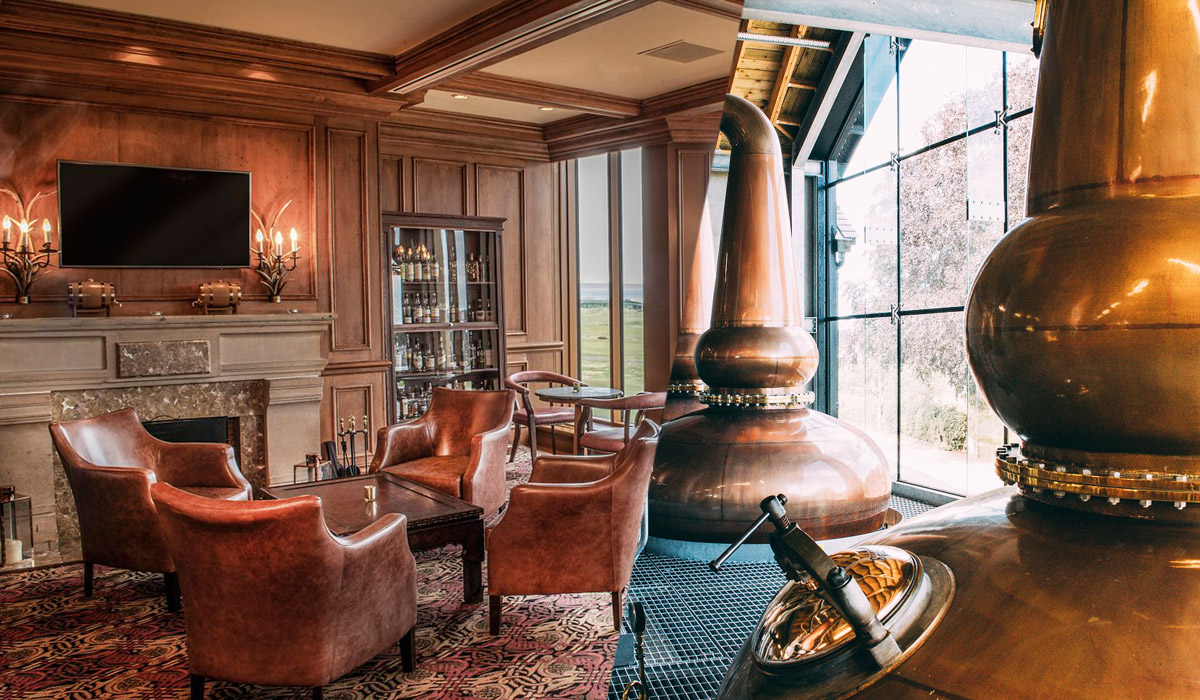
While the Lowlands often are associated with grain whiskies made from wheat—like a high-strength bourbon—the region also produces an array of excellent whiskies distilled from malted barley.
At Lindores Abbey in Newburgh, Fife, they are producing both a single malt and bourbon. The Lindores Distillery was established in 2017 and whisky sales began last year, while the Abbey ruins date back to the late 12th century. The abbey is the site of the first recorded Scotch distillation, from 1494, when King James IV commissioned the monks to produce a supply of “Aqua Vitae.”
In addition to producing whisky, the distillery is reinstating orchards and gardens first introduced by the founding Tironensian monks over 1,000 years ago.
The most famous hotel in Fife might be the finest: the recently renovated Old Course Hotel in St Andrews, which overlooks the notorious 17th hole on the Old Course, the “Road Hole.” The St Andrews Links Trust looks after an array of seven links courses in St Andrews, including the incomparable Old Course, while a short southbound drive takes golfers to the modern links classic of Kingsbarns.
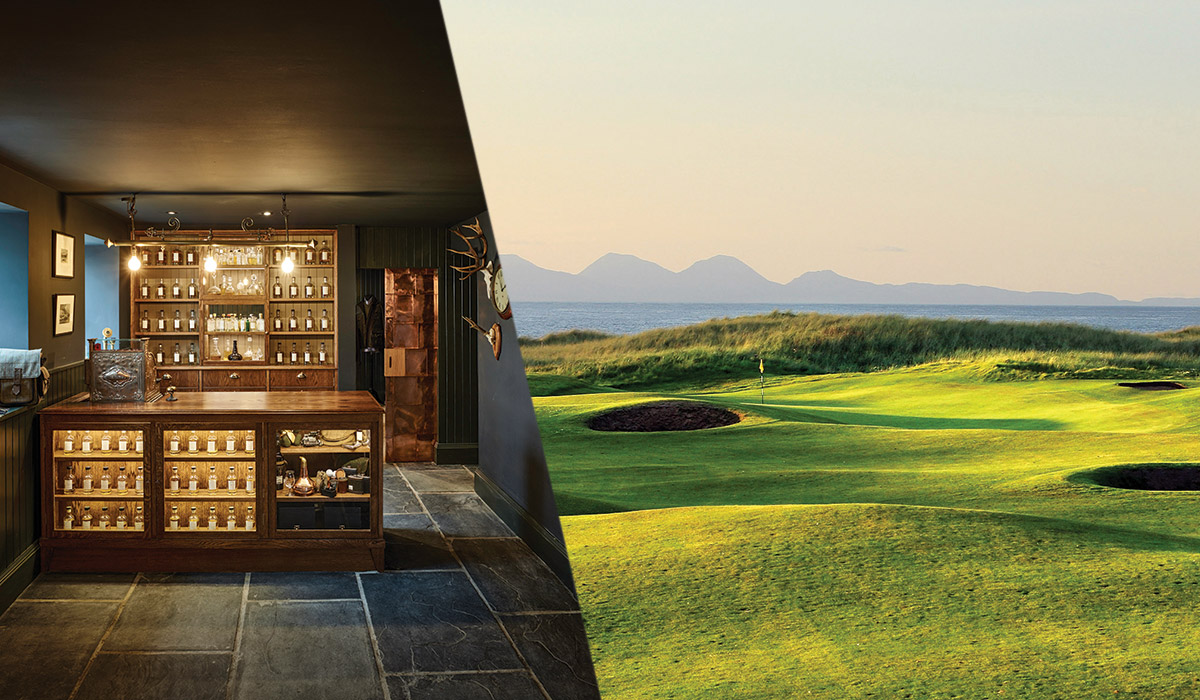
Not many people can pinpoint Campbeltown on a map. It is only 35 miles to the southwest of Glasgow yet by road it is 140 miles. Campbeltown sits at the southern end of the Kintyre peninsula, which stretches out from the Scottish mainland, around the Isle of Arran and down to where the waters of the Firth of Clyde (from the east) and the Irish Sea (from the south) meet the Atlantic (from the west).
Campbeltown has three distilleries—Glen Scotia, Springbank and Glengyle—but at the turn of the 19th century it had 36. It may have been at the end of the road to nowhere but it was the whisky capital of the world, and strategically placed for the ships out of Glasgow to make an early stop before making the Atlantic crossing to the United States. The ships carried whisky out west and returned home laden with tobacco.
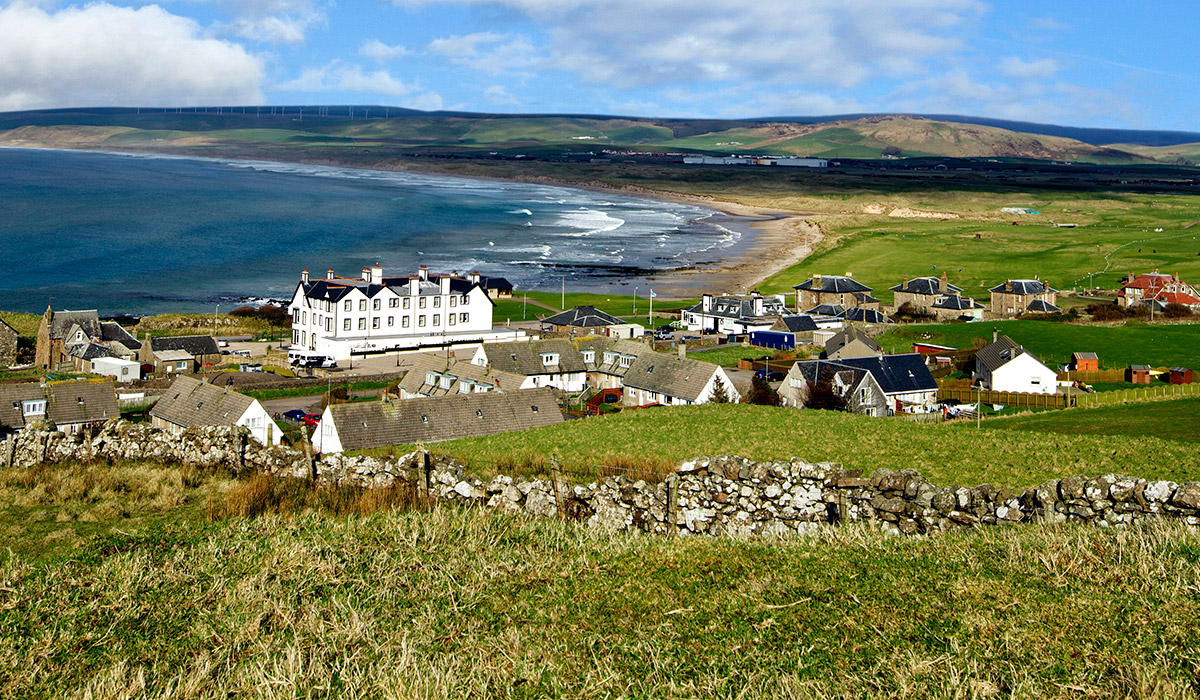
Glen Scotia’s Victoriana single malt is particularly striking. The distillery takes it’s 12-year-old malt and puts 30 percent of it into sherry casks and 70 percent into American white oak bourbon barrels with a deep, deep char. After 12 months they are brought together to create Victoriana, with a beautiful dark color and rich sherry sweetness.
Outside Campbeltown, Machrihanish Golf Club was laid out in part by Old Tom Morris, while its young neighbor, Machrihanish Dunes, was designed by David McLay Kidd. The two courses make Campbeltown an exciting destination for devotees to links golf, while the Ugadale Hotel at The Village of Machrihanish Dunes offers excellent shelter and a fine Kintyre Club steak restaurant.
Follow Us On


| Cookie | Duration | Description |
|---|---|---|
| cookielawinfo-checkbox-analytics | 11 months | This cookie is set by GDPR Cookie Consent plugin. The cookie is used to store the user consent for the cookies in the category "Analytics". |
| cookielawinfo-checkbox-functional | 11 months | The cookie is set by GDPR cookie consent to record the user consent for the cookies in the category "Functional". |
| cookielawinfo-checkbox-necessary | 11 months | This cookie is set by GDPR Cookie Consent plugin. The cookies is used to store the user consent for the cookies in the category "Necessary". |
| cookielawinfo-checkbox-others | 11 months | This cookie is set by GDPR Cookie Consent plugin. The cookie is used to store the user consent for the cookies in the category "Other. |
| cookielawinfo-checkbox-performance | 11 months | This cookie is set by GDPR Cookie Consent plugin. The cookie is used to store the user consent for the cookies in the category "Performance". |
| viewed_cookie_policy | 11 months | The cookie is set by the GDPR Cookie Consent plugin and is used to store whether or not user has consented to the use of cookies. It does not store any personal data. |